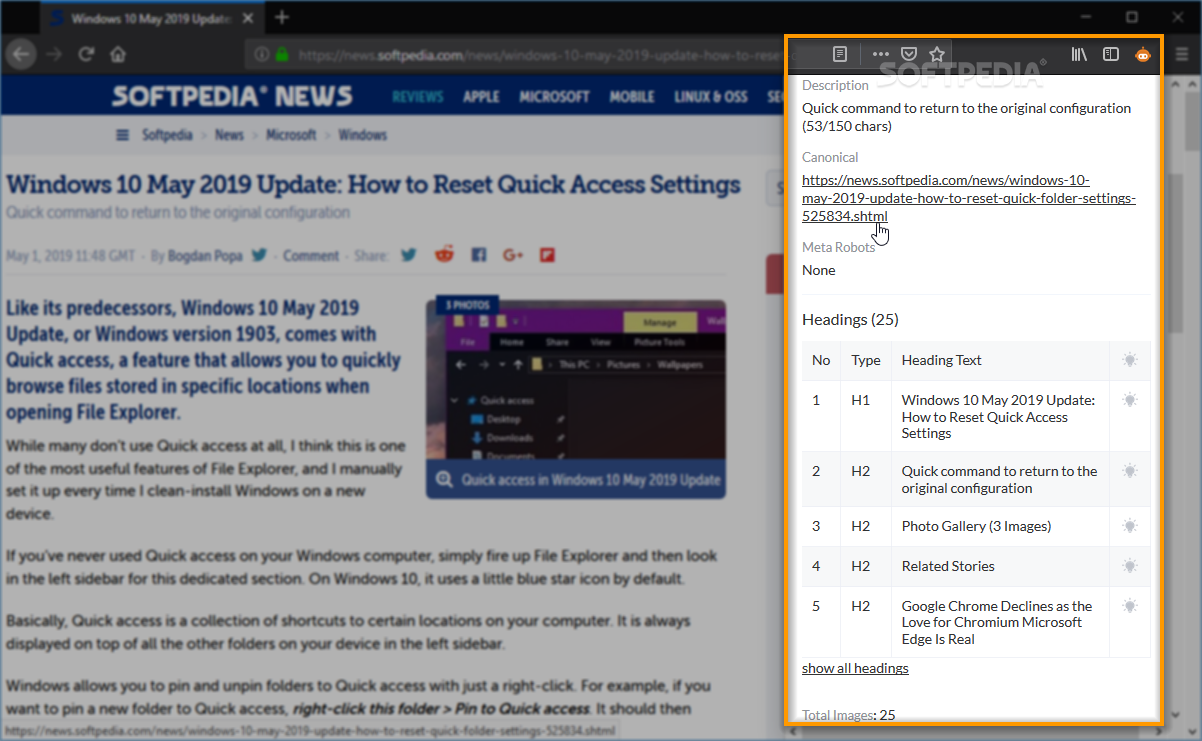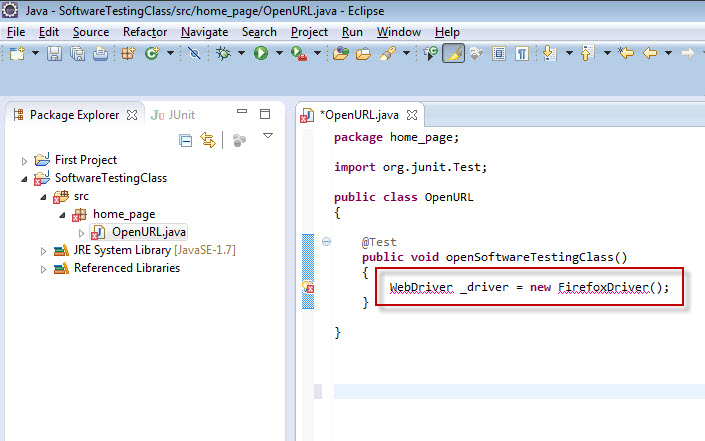Firefox can be controlled by Python. To do this you need the selenium module and a web driver. The Python code starts the web browser and then completely controls it.
The code can then do anything you can do with a web browser, like opening a page, sending key presses or button clicks.
Related course:
The following are 30 code examples for showing how to use selenium.webdriver.FirefoxProfile.These examples are extracted from open source projects. You can vote up the ones you like or vote down the ones you don't like, and go to the original project or source file by following the links above each example.
Selenium firefox. Firefox can be controlled by Python. To do this you need the selenium module and a web driver. The Python code starts the web browser and then completely controls it. The code can then do anything you can do with a web browser, like opening a page, sending key. Selenium is a web automation framework that can be used to automate website testing. Because Selenium starts a webbrowser, it can do any task you would normally do on the web. If you are new to selenium and browser automation, I recommend the course below.
Firefox
Selenium Firefox Example

To make Firefox work with Python selenium, you need to install the geckodriver. The geckodriver driver will start the real firefox browser and supports Javascript.
From python you can load the Firefox browser with one line of code:
Take a look at the selenium firefox code. First import the webdriver, then make it start firefox.
Open a webage with the get page and optionally send keypresses.
What is GeckoDriver?
The web browser Mozilla Firefox uses an engine named the Gecko browser engine. The engine was created by the Mozilla foundation.
Because it’s an engine, it can be used in other web browsers (just like how engines can be used in other cars). Every browser has their own engine, but sometimes they use the same engine to display web pages.
GeckoDriver is what is between Selenium and the FireFox browser. It lets you control the Firefox web browser from Python code. All web browser commands go through the GeckoDriver, the GeckoDriver in turn makes your browser do what you want.
The GeckoDriver is a different executable on every operating system. On Windows it is GeckoDriver.exe, but on Mac there are no .exe files, so it’s named differently.
The GeckoDriver must match the Firefox version, otherwise you can get incompatibility issues or have the issue that it simply doesn’t work.
Headless Firefox
There are several parameters you can specify, one of them is headless. If you want to make Firefox headless (invisible), you add that as parameter in FirefoxOptions.
If you are new to selenium, then I highly recommend this book.
In this section, we will learn how to run your Selenium Test Scripts on Firefox Browser.
Before proceeding with this section, let us first understand the basics of Gecko Driver.
What is Gecko Driver?
The term Gecko refers to Gecko browser engine which was developed by Mozilla Foundation as a part of Mozilla browser.
Gecko Driver serves as a link between your tests in Selenium and the Firefox browser. It acts as a proxy between W3C WebDriver-compatible clients (Eclipse, Netbeans, etc.) to interact with Gecko-based browser (Mozilla Firefox).
Marionette (the next generation of FirefoxDriver) is turned on by default from Selenium 3. Selenium uses W3C Webdriver protocol to send requests to GeckoDriver, which translates them into a protocol named Marionette. Even if you are working with older versions of Firefox browser, Selenium 3 expects you to set path to the driver executable by the webdriver.gecko.driver.
Note: Selenium 3 has upgraded itself to now launch Firefox driver using Marionette driver instead of the default initialisation supported earlier.

Let us consider a test case in which we will try to automate the following scenarios in Firefox browser.
- Launch Firefox browser.
- Open URL: www.javatpoint.com
- Click on the Custom Search text box
- Type the value 'Java'
- Click on the Search button.
We will create our second test case in the same test suite (Demo_Test).
Step1. Right click on the 'src' folder and create a new Class File from New > Class.

Give your Class name as 'Second' and click on 'Finish' button.
Step2. Open URL: https://github.com/mozilla/geckodriver/releases in your browser and click on the appropriate version for GeckoDriver download based on the operating system you are currently working on. Here, we are downloading the 64bit version of GeckoDriver for windows.

The downloaded file would be in zipped format. Unpack the contents in a convenient directory.
Before writing the test script, let us first understand how we can initialize GeckoDriver in Selenium. There are three ways to initialize GeckoDriver:
1. Using Desired Capabilities
First, we have to set the system property for Gecko Driver.
Below is the code to set gecko driver using DesiredCapabilities class.
Selenium Firefox Headless
Here is the complete code:
2. Using marionette property:
Gecko Driver can also be initialized using marionette property.
Download Geckodriver
The code for Desired Capabilities is not required for this method.
3. Using Firefox Options:
Firefox 47 or later versions have marionette driver as a legacy system. Thus, marionette driver can be called using Firefox Options as shown below.
Step3. Now it is time to code. We have embedded comments for each block of code to explain the steps clearly.
Selenium Firefox Path
The Eclipse code window will look like this:
Step4. Right click on the Eclipse code and select Run As > Java Application.
Step5. The output of above test script would be displayed in Firefox browser.
